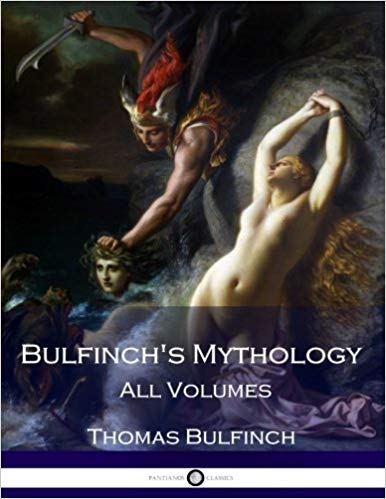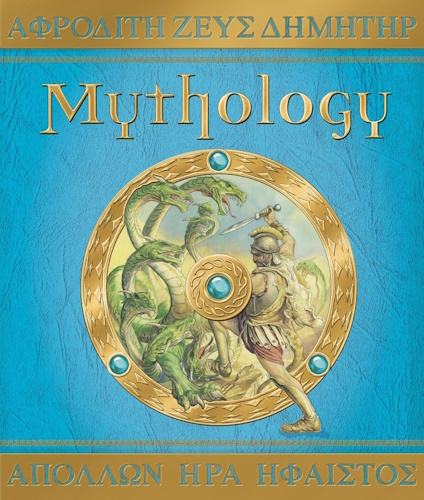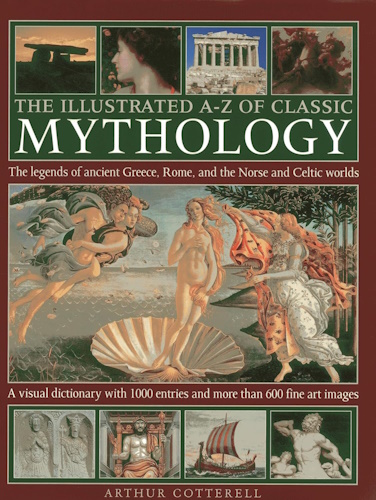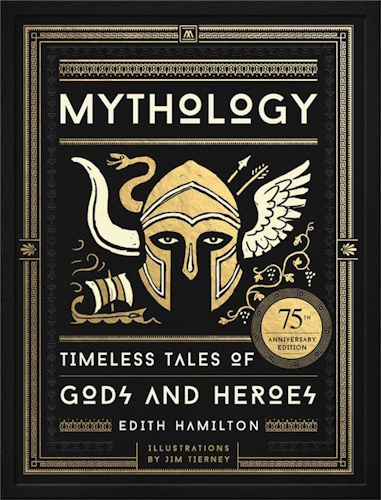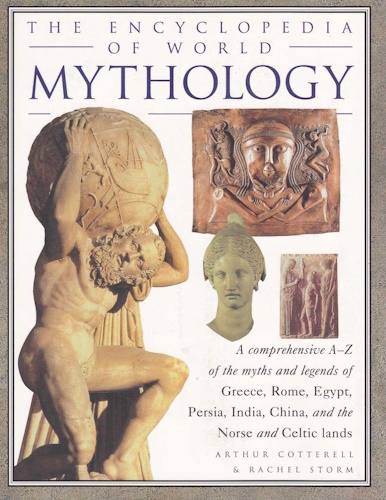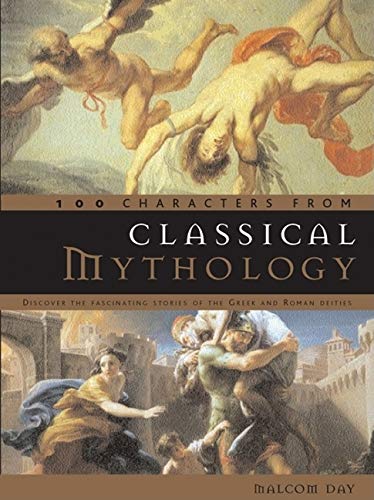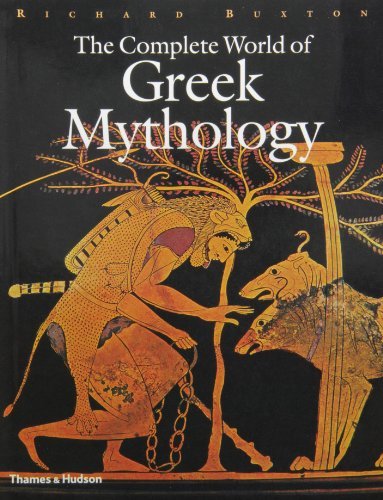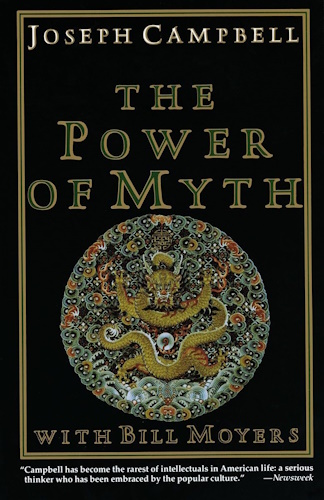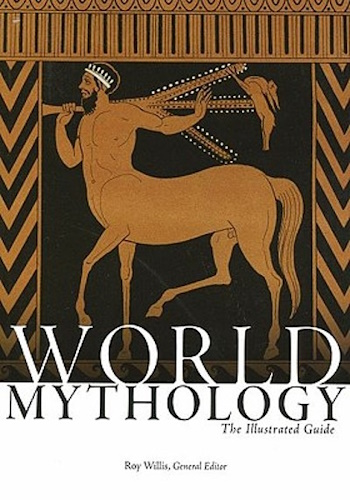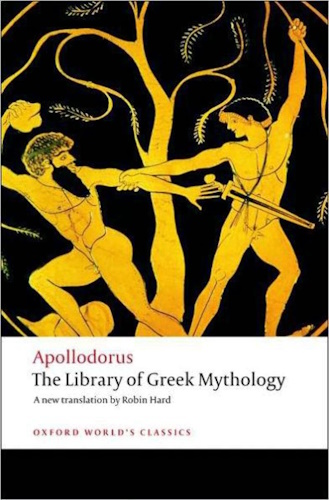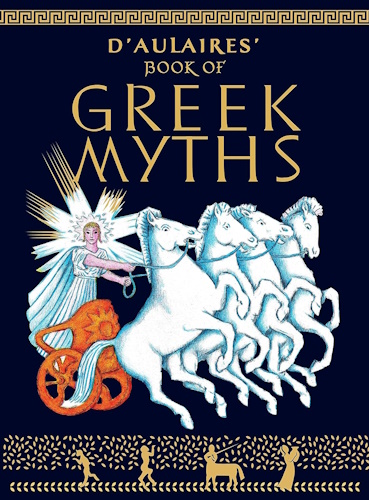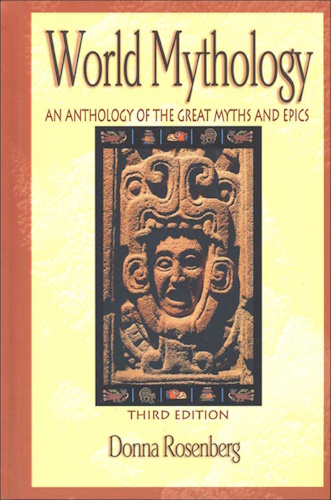
![]()
![]()
CHAPTER XLI.
THE DRUIDS- IONA.
THE DRUIDS.
THE Druids were the priests or ministers of religion among the ancient Celtic nations in Gaul, Britain, and Germany. Our information respecting them is borrowed from notices in the Greek and Roman writers; compared with the remains of Welsh and Gaelic poetry still extant.
The Druids combined the functions of the priest, the magistrate, the scholar, and the physician. They stood to the people of the Celtic tribes in a relation closely analogous to that in which the Brahmans of India, the Magi of Persia, and the priests of the Egyptians stood to the people respectively by whom they were revered.
The Druids taught the existence of one god, to whom they gave a name "Be' al," which Celtic antiquaries tell us means "the life of everything," or "the source of all beings," and which seems to have affinity with the Phoenician Baal. What renders this affinity more striking is that the Druids as well as the Phoenicians identified this, their supreme deity, with the Sun. Fire was regarded as a symbol of the divinity. The Latin writers assert that the Druids also worshipped numerous inferior gods.
They used no images to represent the object of their worship, nor did they meet in temples or buildings of any kind for the performance of their sacred rites. A circle of stones (each stone generally of vast size), enclosing an area of from twenty feet to thirty yards in diameter, constituted their sacred place. The most celebrated of these now remaining is Stonehenge, on Salisbury Plain, England.
These sacred circles were generally situated near some stream, or under the shadow of a grove or widespreading oak. In the centre of the circle stood the Cromlech or altar, which was a large stone, placed in the manner of a table upon other stones set up on end. The Druids had also their high places, which were large stones or piles of stones on the summits of hills. These were called Cairns, and were used in the worship of the deity under the symbol of the sun.
That the Druids offered sacrifices to their deity there can be no doubt. But there is some uncertainty as to what they offered, and of the ceremonies connected with their religious services we know almost nothing. The classical (Roman) writers affirm that they offered on great occasions human sacrifices; as for success in war or for relief from dangerous diseases. Caesar has given a detailed account of the manner in which this was done. "They have images of immense size, the limbs of which are framed with twisted twigs and filled with living persons. These being set on fire, those within are encompassed by the flames." Many attempts have been made by Celtic writers to shake the testimony of the Roman historians to this fact, but without success.
The Druids observed two festivals in each year. The former took place in the beginning of May, and was called Beltane or "fire of God." On this occasion a large fire was kindled on some elevated spot, in honour of the sun, whose returning beneficence they thus welcomed after the gloom and desolation of winter. Of this custom a trace remains in the name given to Whitsunday in parts of Scotland to this day. Sir Walter Scott uses the word in the "Boat Song" in the "Lady of the Lake":
"Ours is no sapling, chance sown by the fountain,Blooming at Beltane in winter to fade;" etc.
The other great festival of the Druids was called "Samh' in," or "fire of peace," and was held on Hallow-eve (first of November), which still retains this designation in the Highlands of Scotland. On this occasion the Druids assembled in solemn conclave, in the most central part of the district, to discharge the judicial functions of their order. All questions, whether public or private, all crimes against person or property, were at this time brought before them for adjudication. With these judicial acts were combined certain superstitious usages, especially the kindling of the sacred fire, from which all the fires in the district, which had been beforehand scrupulously extinguished, might be relighted. This usage of kindling fires on Hallow-eve lingered in the British islands long after the establishment of Christianity.
Besides these two great annual festivals, the Druids were in the habit of observing the full moon, and especially the sixth day of the moon. On the latter they sought the Mistletoe, which grew on their favourite oaks, and to which, as well as to the oak itself, they ascribed a peculiar virtue and sacredness. The discovery of it was an occasion of rejoicing and solemn worship. "They call it," says Pliny, "by a word in their language, which means 'heal-all,' and having made solemn preparation for feasting and sacrifice under the tree, they drive thither two milk-white bulls, whose horns are then for the first time bound. The priest then, robed in white, ascends the tree, and cuts off the mistletoe with a golden sickle. It is caught in a white mantle, after which they proceed to slay the victims, at the same time praying that God would render his gift prosperous to those to whom he had given it." They drink the water in which it has been infused, and think it a remedy for all diseases. The mistletoe is a parasitic plant, and is not always nor often found on the oak, so that when it is found it is the more precious.
The Druids were the teachers of morality as well as of religion. Of their ethical teaching a valuable specimen is preserved in the Triads of the Welsh Bards, and from this we may gather that their views of moral rectitude were on the whole just, and that they held and inculcated many very noble and valuable principles of conduct. They were also the men of science and learning of their age and people. Whether they were acquainted with letters or not has been disputed, though the probability is strong that they were, to some extent. But it is certain that they committed nothing of their doctrine, their history, or their poetry to writing. Their teaching was oral, and their literature (if such a word may be used in such a case) was preserved solely by tradition. But the Roman writers admit that "they paid much attention to the order and laws of nature, and investigated and taught to the youth under their charge many things concerning the stars and their motions, the size of the world and the lands, and concerning the might and power of the immortal gods."
Their history consisted in traditional tales, in which the heroic deeds of their forefathers were celebrated. These were apparently in verse, and thus constituted part of the poetry as well as the history of the Druids. In the poems of Ossian we have, if not the actual productions of Druidical times, what may be considered faithful representations of the songs of the Bards.
The Bards were an essential part of the Druidical hierarchy. One author, Pennant, says, "The Bards were supposed to be endowed with powers equal to inspiration. They were the oral historians of all past transactions, public and private. They were also accomplished genealogists," etc.
Pennant gives a minute account of the Eisteddfods or sessions of the Bards and minstrels, which were held in Wales for many centuries, long after the Druidical priesthood in its other departments became extinct. At these meetings none but Bards of merit were suffered to rehearse their pieces, and minstrels of skill to perform. Judges were appointed to decide on their respective abilities, and suitable degrees were conferred. In the earlier period the judges were appointed by the Welsh princes, and after the conquest of Wales, by commission from the kings of England. Yet the tradition is that Edward I, in revenge for the influence of the Bards in animating the resistance of the people to his sway, persecuted them with great cruelty. This tradition has furnished the poet Gray with the subject of his celebrated ode, the "Bard."
There are still occasional meetings of the lovers of Welsh poetry and music, held under the ancient name. Among Mrs. Hemans' poems is one written for an Eisteddfod, or meeting of Welsh Bards, held in London, May 22, 1822. It begins with a description of the ancient meeting, of which the following lines are a part:
"...midst the eternal cliffs, whose strength defiedThe crested Roman in his hour of pride;
And where the Druid's ancient cromlech frowned,
And the oaks breathed mysterious murmurs round,
There thronged the inspired of yore! on plain or height,
In the sun's face, beneath the eye of light,
And baring unto heaven each noble head,
Stood in the circle, where none else might tread."
The Druidical system was at its height at the time of the Roman invasion under Julius Caesar. Against the Druids, as their chief enemies, these conquerors of the world directed their unsparing fury. The Druids, harassed at all points on the mainland, retreated to Anglesey and Iona, where for a season they found shelter and continued their now dishonoured rites.
The Druids retained their predominance in Iona and over the adjacent islands and mainland until they were supplanted and their superstitions overturned by the arrival of St. Columba, the apostle of the Highlands, by whom the inhabitants of that district were first led to profess Christianity.
IONA.
One of the smallest of the British Isles, situated near a rugged and barren coast, surrounded by dangerous seas, and possessing no sources of internal wealth, Iona has obtained an imperishable place in history as the seat of civilization and religion at a time when the darkness of heathenism hung over almost the whole of Northern Europe. Iona or Icolmkill is situated at the extremity of the island of Mull, from which it is separated by a strait of half a mile in breadth, its distance from the mainland of Scotland being thirty-six miles.
Columba was a native of Ireland, and connected by birth with the princes of the land. Ireland was at that time a land of gospel light, while the western and northern parts of Scotland were still immersed in the darkness of heathenism. Columba with twelve friends landed on the island of Iona in the year of our Lord 563, having made the passage in a wicker boat covered with hides. The Druids who occupied the island endeavoured to prevent his settling there, and the savage nations on the adjoining shores incommoded him with their hostility, and on several occasions endangered his rife by their attacks. Yet by his perseverance and zeal he surmounted all opposition, procured from the king a gift of the island, and established there a monastery of which he was the abbot. He was unwearied in his labours to disseminate a knowledge of the Scriptures throughout the Highlands and islands of Scotland, and such was the reverence paid him that though not a bishop, but merely a presbyter and monk, the entire province with its bishops was subject to him and his successors. The Pictish monarch was so impressed with a sense of his wisdom and worth that he held him in the highest honour, and the neighbouring chiefs and princes sought his counsel and availed themselves of his judgment in settling their disputes.
When Columba landed on Iona he was attended by twelve followers whom he had formed into a religious body of which he was the head. To these, as occasion required, others were from time to time added, so that the original number was always kept up. Their institution was called a monastery and the superior an abbot, but the system had little in common with the monastic institutions of later times. The name by which those who submitted to the rule were known was that of Culdees, probably from the Latin "cultores Dei"- worshippers of God. They were a body of religious persons associated together for the purpose of aiding each other in the common work of preaching the gospel and teaching youth, as well as maintaining in themselves the fervour of devotion by united exercises of worship. On entering the order certain vows were taken by the members, but they were not those which were usually imposed by monastic orders, for of these, which are three- celibacy, poverty, and obedience,- the Culdees were bound to none except the third. To poverty they did not bind themselves; on the contrary they seem to have laboured diligently to procure for themselves and those dependent on them the comforts of life. Marriage also was allowed them, and most of them seem to have entered into that state. True, their wives were not permitted to reside with them at the institution, but they had a residence assigned to them in an adjacent locality, Near Iona there is an island which still bears the name of "Eilen nam ban," women's island, where their husbands seem to have resided with them, except when duty required their presence in the school or the sanctuary.
Campbell, in his poem of "Reullura," alludes to the married monks of Iona:
"...The pure CuldeesWere Albyn's earliest priests of God,
Ere yet an island of her seas
By foot of Saxon monk was trod,
Long ere her churchmen by bigotry
Were barred from holy wedlock's tie.
'Twas then that Aodh, famed afar,
In Iona preached the word with power,
And Reullura, beauty's star,
Was the partner of his bower."
In one of his "Irish Melodies," Moore gives the legend of St. Senanus and the lady who sought shelter on the island, but was repulsed:
"O, haste and leave this sacred isle,Unholy bark, ere morning smile;
For on thy deck, though dark it be,
A female form I see;
And I have sworn this sainted sod
Shall ne'er by woman's foot be trod."
In these respects and in others the Culdees departed from the established rules of the Romish church, and consequently were deemed heretical. The consequence was that as the power of the latter advanced that of the Culdees was enfeebled. It was not, however, till the thirteenth century that the communities of the Culdees were suppressed and the members dispersed. They still continued to labour as individuals, and resisted the inroads of Papal usurpation as they best might till the light of the Reformation dawned on the world.
Iona, from its position in the western seas, was exposed to the assaults of the Norwegian and Danish rovers by whom those seas were infested, and by them it was repeatedly pillaged, its dwellings burned, and its peaceful inhabitants put to the sword. These unfavourable circumstances led to its gradual decline, which was expedited by the subversion of the Culdees throughout Scotland. Under the reign of Popery the island became the seat of a nunnery, the ruins of which are still seen. At the Reformation, the nuns were allowed to remain, living in community, when the abbey was dismantled.
Iona is now chiefly resorted to by travellers on account of the numerous ecclesiastical and sepulchral remains which are found upon it. The principal of these are the Cathedral or Abbey Church and the Chapel of the Nunnery. Besides these remains of ecclesiastical antiquity, there are some of an earlier date, and pointing to the existence on the island of forms of worship and belief different from those of Christianity. These are the circular Cairns which are found in various parts, and which seem to have been of Druidical origin. It is in reference to all these remains of ancient religion that Johnson exclaims, "That man is little to be envied whose patriotism would not gain force upon the plains of Marathon, or whose piety would not grow warmer amid the ruins of Iona."
In the "Lord of the Isles," Scott beautifully contrasts the church on Iona with the cave of Staffa, opposite:
"Nature herself, it seemed, would raiseA minster to her Maker's praise!
Not for a meaner use ascend
Her columns, or her arches bend;
Nor of a theme less solemn tells
That mighty surge that ebbs and swells,
And still between each awful pause,
From the high vault an answer draws,
In varied tone, prolonged and high,
That mocks the organ's melody;
Nor doth its entrance front in vain
To old Iona's holy fane,
That Nature's voice might seem to say,
Well hast thou done, frail child of clay!
Thy humble powers that stately shrine
Tasked high and hard- but witness mine!"
-
Urantia Book, 44:0.11 - The Celestial Artisans
Never in your long ascendancy will you lose the power to recognize your associates of former existences. Always, as you ascend inward in the scale of life, will you retain the ability to recognize and fraternize with the fellow beings of your previous and lower levels of experience. Each new translation or resurrection will add one more group of spirit beings to your vision range without in the least depriving you of the ability to recognize your friends and fellows of former estates.
-
Princess Bride 1987 Wallace Shawn (Vizzini) and Mandy Patinkin (Inigo Montoya)
Vizzini: HE DIDN'T FALL? INCONCEIVABLE.
Inigo Montoya: You keep using that word. I do not think it means what you think it means. -
Urantia Book, 117:4.14 - The Finite God
And here is mystery: The more closely man approaches God through love, the greater the reality -- actuality -- of that man. The more man withdraws from God, the more nearly he approaches nonreality -- cessation of existence. When man consecrates his will to the doing of the Father's will, when man gives God all that he has, then does God make that man more than he is.
-
Urantia Book, 167:7.4 - The Talk About Angels
"And do you not remember that I said to you once before that, if you had your spiritual eyes anointed, you would then see the heavens opened and behold the angels of God ascending and descending? It is by the ministry of the angels that one world may be kept in touch with other worlds, for have I not repeatedly told you that I have other sheep not of this fold?"
-
Urantia Book, Foreword - 0:12.12 - The Trinities
But we know that there dwells within the human mind a fragment of God, and that there sojourns with the human soul the Spirit of Truth; and we further know that these spirit forces conspire to enable material man to grasp the reality of spiritual values and to comprehend the philosophy of universe meanings. But even more certainly we know that these spirits of the Divine Presence are able to assist man in the spiritual appropriation of all truth contributory to the enhancement of the ever-progressing reality of personal religious experience—God-consciousness.
-
Urantia Book, 1:4.3 - The Mystery Of God
When you are through down here, when your course has been run in temporary form on earth, when your trial trip in the flesh is finished, when the dust that composes the mortal tabernacle "returns to the earth whence it came"; then, it is revealed, the indwelling "Spirit shall return to God who gave it." There sojourns within each moral being of this planet a fragment of God, a part and parcel of divinity. It is not yet yours by right of possession, but it is designedly intended to be one with you if you survive the mortal existence.
-
Urantia Book, 1:4.1 - The Mystery Of God
And the greatest of all the unfathomable mysteries of God is the phenomenon of the divine indwelling of mortal minds. The manner in which the Universal Father sojourns with the creatures of time is the most profound of all universe mysteries; the divine presence in the mind of man is the mystery of mysteries.
-
Urantia Book, 1:4.6 - The Mystery Of God
To every spirit being and to every mortal creature in every sphere and on every world of the universe of universes, the Universal Father reveals all of his gracious and divine self that can be discerned or comprehended by such spirit beings and by such mortal creatures. God is no respecter of persons, either spiritual or material. The divine presence which any child of the universe enjoys at any given moment is limited only by the capacity of such a creature to receive and to discern the spirit actualities of the supermaterial world.
-
Urantia Book, 11:0.1 - The Eternal Isle Of Paradise
Paradise is the eternal center of the universe of universes and the abiding place of the Universal Father, the Eternal Son, the Infinite Spirit, and their divine co-ordinates and associates. This central Isle is the most gigantic organized body of cosmic reality in all the master universe. Paradise is a material sphere as well as a spiritual abode. All of the intelligent creation of the Universal Father is domiciled on material abodes; hence must the absolute controlling center also be material, literal. And again it should be reiterated that spirit things and spiritual beings are real.
-
Urantia Book, 50:6.4 - Planetary Culture
Culture presupposes quality of mind; culture cannot be enhanced unless mind is elevated. Superior intellect will seek a noble culture and find some way to attain such a goal. Inferior minds will spurn the highest culture even when presented to them ready-made.
-
Urantia Book, 54:1.6 - True And False Liberty
True liberty is the associate of genuine self-respect; false liberty is the consort of self-admiration. True liberty is the fruit of self-control; false liberty, the assumption of self-assertion. Self-control leads to altruistic service; self-admiration tends towards the exploitation of others for the selfish aggrandizement of such a mistaken individual as is willing to sacrifice righteous attainment for the sake of possessing unjust power over his fellow beings.
-
Urantia Book, 54:1.9 - True And False Liberty
How dare the self-willed creature encroach upon the rights of his fellows in the name of personal liberty when the Supreme Rulers of the universe stand back in merciful respect for these prerogatives of will and potentials of personality! No being, in the exercise of his supposed personal liberty, has a right to deprive any other being of those privileges of existence conferred by the Creators and duly respected by all their loyal associates, subordinates, and subjects.
-
Urantia Book, 54:1.8 - True And False Liberty
There is no error greater than that species of self-deception which leads intelligent beings to crave the exercise of power over other beings for the purpose of depriving these persons of their natural liberties. The golden rule of human fairness cries out against all such fraud, unfairness, selfishness, and unrighteousness.
